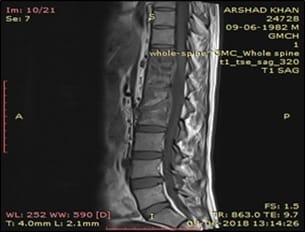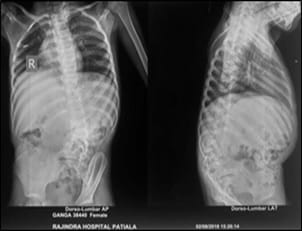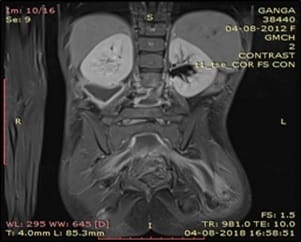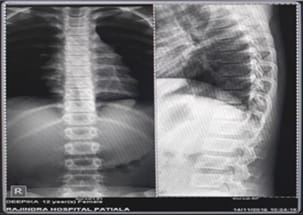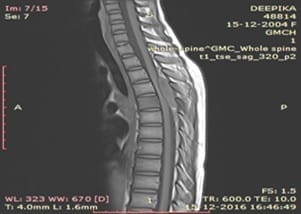Comparison of MRI with x-ray in the evaluation of tuberculosis of spine
Bansal A.1, Kaur I.2, Kaur Mohi J.3*, Garg Y.4
DOI: https://doi.org/10.17511/ijmrr.2019.i05.06
1 Aman Bansal, Junior Resident, Government Medical College, Patiala, Punjab, India.
2 Irwinjit Kaur, Junior Resident, Government Medical College, Patiala, Punjab, India.
3* Jaswinder Kaur Mohi, Associate Professor, Government Medical College, Patiala, Punjab, India.
4 Yogesh Garg, Junior Resident, Government Medical College, Patiala, Punjab, India.
Introduction: MRI is the most valuable method for detecting early disease and is preferred technique to define the activity and extent of infection followed by x–ray. Aim: To evaluate MRI as a valuable noninvasive diagnostic tool in spinal tuberculosis and to correlate with plain radiograph for the early detection of spinal tuberculosis. Material and method: This cross-sectional study was carried out on 40 patients who were suspected as cases of spinal tuberculosis. Plain X-ray were done before the MRI examination. Results: The comparison of X-ray and MRI for evaluating spinal TB on the basis of end plate irregularity, thecal sac compression, cord compression and cord changes was statistically highly significant. It was statistically significant on the basis of Disk Space Narrowing/Disk Involvement, paravertebral Widening/Psoas abscess and Posterior Element Involvement. X-ray when compared to MRI was found to have a sensitivity of 48.72% and a specificity of 100% in detection of end plate irregularities, sensitivity of 89.47% and specificity of 100% in detection of vertebral height reduction, sensitivity of 78.79% and specificity of 100% in detection of disk Space narrowing / disk Involvement and sensitivity of 28.57% and specificity of 92.31% in detection of paravertebral widening/psoas abscess. Conclusion: MRI is a better and more Informative imaging modality in evaluation of patients of Pott’s spine providing the diagnosis earlier than conventional methods.
Keywords: Tuberculosis, MRI, X ray, Disc Space, Cord compression, Spinal Tuberculosis
| Corresponding Author | How to Cite this Article | To Browse |
|---|---|---|
| , Associate Professor, Government Medical College, Patiala, Punjab, India. Email: |
Bansal A, Kaur I, Mohi JK, Garg Y. Comparison of MRI with x-ray in the evaluation of tuberculosis of spine. Int J Med Res Rev. 2019;7(5):380-388. Available From https://ijmrr.medresearch.in/index.php/ijmrr/article/view/1083 |


 ©
© 
